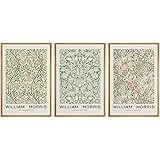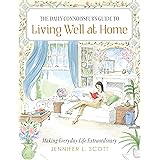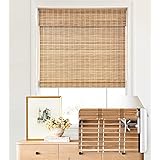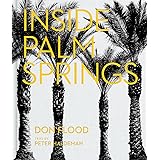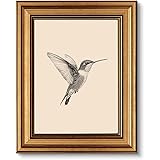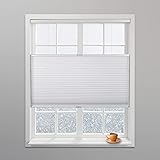As the design world continually evolves, foresight becomes a designer’s most valuable asset. The accompanying video offers a compelling glimpse into the nascent 2026 design trends, highlighting shifts that are already taking root in high-end projects and custom creations. While the allure of novelty often beckons, understanding the deeper currents beneath these trends allows for the creation of truly enduring and impactful spaces. This article delves further into these critical developments, providing comprehensive insights into the aesthetic philosophies that will shape interior environments in the coming year.
The Enduring Allure of Art Deco: Reimagined for 2026
The Art Deco era, a period celebrated for its opulence and geometric grandeur, is experiencing a remarkable resurgence. However, the 2026 design trends indicate a significant reinterpretation. Gone are the days of purely theatrical or overtly nostalgic interpretations; the contemporary Deco influence embraces a streamlined, minimal, and distinctly architectural character. This refined approach sheds the frivolous aspects, distilling the essence of Deco into its most potent forms.
Consider the architecture of a skyscraper, not as a decorative facade, but as a series of integrated, functional layers. This analogy perfectly captures the spirit of the new Art Deco. Designers are now crafting furniture and elements with stepped or tiered geometry, creating depth and visual interest without resorting to excessive ornamentation. These forms are precise, intentional, and often echo the structural elegance of classical buildings, reflecting a sophisticated understanding of proportion and balance.
Furthermore, material selections for this revitalized aesthetic are equally discerning. Glossy lacquer, often seen in deep, rich hues, provides a luxurious, reflective surface that accentuates geometric lines. Dark burl woods, with their intricate, swirling grain patterns, introduce a natural yet refined texture, grounding the otherwise sharp geometry. Mirrored finishes, used judiciously and in small doses, serve as strategic accents, catching light and expanding perceptions of space without overwhelming the design. These materials are not merely decorative; they are integral to expressing the architectural purity of this modern Deco revival, transforming functional items into sculptural statements.
Lighting, too, plays a pivotal role in this minimalist Art Deco revival. Fixtures are characterized by linear and symmetrical forms, casting a moody yet modern glow. Imagine the precise, rhythmic lines of a piano keyboard, where each key contributes to a harmonious whole. Similarly, Deco-inspired lighting designs often feature strong vertical or horizontal elements that create a sense of order and sophisticated drama. These pieces often utilize warm LED technology to produce an inviting ambiance, perfectly balancing the boldness of the form with the subtlety of the illumination. Such deliberate lighting enhances the architectural contours of a room, transforming light from a utility into a design feature.
Embracing Authenticity: The Rise of Hand-Thrown Ceramics and Tactile Forms
Beyond the refined geometry of Art Deco, another significant shift in interior design trends 2026 is the profound appreciation for the handmade and the human touch. Hand-thrown ceramics and clay forms are transcending their traditional roles as mere accent pieces, now serving as foundational elements that anchor the entire design language of a room. This movement signifies a broader philosophical shift within design, a deliberate turning away from mass-produced perfection towards an embrace of imperfection, tactility, and genuine provenance.
The allure of objects from provenance lies in their story, their journey, and the inherent character imparted by the hands that shaped them. Unlike factory-produced items that aim for absolute uniformity, handmade ceramics inherently carry subtle variations—a slight wobble, an uneven glaze, a fingerprint impression—that celebrate their unique origins. This fosters a connection between the object and its maker, infusing spaces with soul and narrative. It is akin to appreciating a vintage wine, where each bottle, though from the same vineyard, possesses its own distinct nuances.
This commitment to authenticity extends across a spectrum of forms, from the raw, robust aesthetics of Brutalist-inspired vessels to the smooth, comforting curves of terracotta pots. Brutalist forms, with their unpolished concrete-like textures and monumental presence, evoke a sense of strength and honesty. They command attention, creating a powerful counterpoint to softer elements within a room. Conversely, smooth terracotta vessels, often in natural, earthy tones, offer a grounding presence, connecting interiors to the natural world. Their porous surfaces and warm hues invite touch and convey a sense of calm and ancient wisdom.
Furthermore, the integration of these tactile elements resonates with a growing desire for sensory engagement within our living spaces. In an increasingly digital world, there is a yearning for physical connection and tangible beauty. Hand-thrown ceramics, with their varied textures and forms, provide this vital sensory input, making rooms feel more inviting, more grounded, and ultimately, more human. They invite us to slow down, to appreciate the craftsmanship, and to connect with the inherent beauty of natural materials.
The English Kitchen: A Standard of Enduring Elegance
A significant counter-movement against the prevalent sterile, hyper-modernized kitchen aesthetic is gaining momentum, leading to the emergence of what designers are terming the “English Kitchen.” This new kitchen standard, deeply rooted in traditional English design principles, is meticulously adapted for contemporary living. It champions a utilitarian yet elegant approach, prioritizing unfussy functionality, intentional design, and a profound sense of permanence and heritage.
This trend represents a pivot towards kitchens that feel ‘inherited’—spaces imbued with a sense of history and warmth, designed to last not just years, but generations. It’s an antidote to the disposable culture, much like a well-loved antique timepiece that gains character with age. The English Kitchen evokes a feeling of continuity, suggesting that the space has evolved over time, accumulating stories and memories within its walls. This fosters an emotional connection, making the kitchen the true heart of the home rather than a mere functional zone.
Distinctive features define this aesthetic. Inset cabinetry, where cabinet doors sit flush within the frame, immediately conveys superior craftsmanship and a timeless appeal. This detail, while subtle, speaks volumes about the quality of construction and the attention to detail. Exposed hinges, particularly in classic metallic finishes like brass or aged bronze, further accentuate the bespoke nature of the joinery. They are not hidden but celebrated, becoming decorative elements in their own right, much like the intricate hardware on a vintage chest.
Moreover, the palette for these kitchens veers towards heritage paint colors—muted greens, sophisticated greys, deep blues, and warm creams—which evoke a sense of tradition and calm. These colors are often inspired by the natural landscape and historical estates, offering a timeless backdrop that feels both comforting and refined. Instead of stark white or overly saturated hues, these tones provide a gentle, inviting atmosphere that encourages lingering and shared experiences. Beyond aesthetics, the English Kitchen embraces robust materials like natural stone countertops, solid wood floors, and quality hardware, ensuring that these spaces are not only beautiful but also inherently resilient and practical for everyday life.
Delicate Folds and Pleated Forms: Softening Spaces with Couture Inspiration
Drawing inspiration directly from the refined world of couture fashion, 2026 design trends are introducing delicate folds and pleated forms into interior spaces. This trend is a sophisticated method to soften architectural lines, introduce visual rhythm, and create an atmosphere of understated luxury. Much like a perfectly draped garment transforms a simple piece of fabric into a work of art, these pleated elements elevate ordinary materials into sculptural moments.
This is predominantly a material-led trend, meaning the choice and manipulation of textiles are paramount. We are witnessing the application of pleating across various interior elements, including upholstery, lighting, and decorative textiles. The inherent structure of a fold or a pleat creates a play of light and shadow, adding depth and a dynamic visual texture that can transform a flat surface into something dimensional and engaging. It’s akin to how a calm pond can be brought to life by the ripple of a gentle breeze, creating ever-changing patterns.
For instance, pleated lampshades diffuse light in a soft, ethereal manner, casting a warm glow that enhances the mood of a room. The precise folds create a subtle geometric pattern, adding a layer of sophistication to what might otherwise be a simple light source. Plisse textiles, characterized by their finely pleated surfaces, offer a luxurious hand and a unique visual texture that can be incorporated into curtains, cushions, or even wall coverings, creating a feeling of gentle movement and flow within a static space.
Furthermore, folded paper wall sconces provide subtle yet sculptural moments, acting as miniature art installations that glow from within. These pieces often showcase intricate origami-like designs, bringing an element of handcrafted artistry and delicate beauty to walls. Custom upholstery with vertical channeling and soft pleating works beautifully on headboards and banquettes, creating a sense of plush comfort and visual linearity. This technique not only adds a rich texture but also contributes to the acoustic comfort of a space, absorbing sound and enhancing the overall sense of tranquility. Ultimately, these pleated forms infuse interiors with a quiet elegance, a testament to the power of texture and form to evoke emotion and elevate the human experience.



